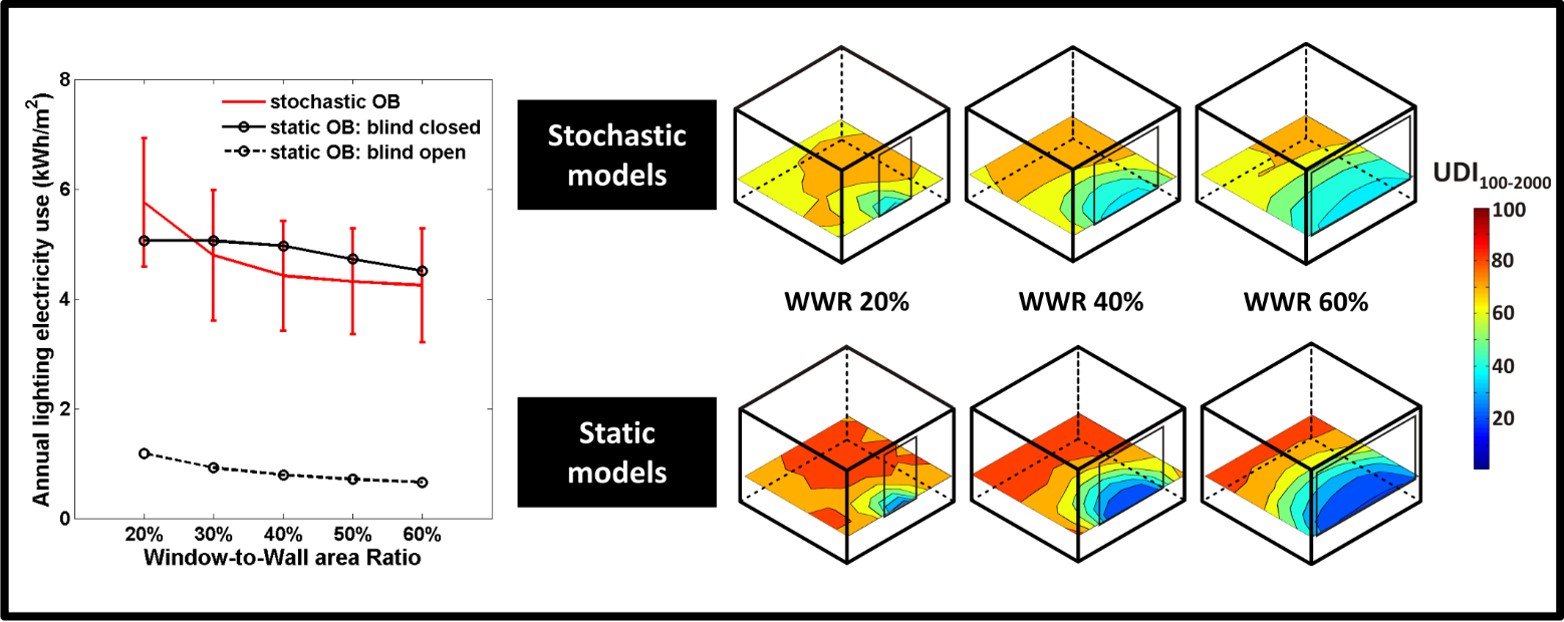Occupants play a tremendous role in building energy and comfort performance. Yet, they are rarely explicitly incorporated into design processes – particularly simulation-aided design. The HBI Lab is actively engaged in this research and has strong ties to the international community through IEA EBC Annex 66. There are three main aspects that we are investigating.
- In-situ occupant monitoring and field studies. We believe there is incredible value in monitoring occupants in their natural habitat so that lessons can be learned about existing building design. Furthermore, if long-term data is collected, this information can be used to develop statistically significant relationships between various inputs (e.g., time of day, solar conditions, etc.) and adaptive occupant actions (e.g., window blind closing). In all, we’re interested in the following occupant actions: occupancy (presence), light switching, blind adjustment, window opening and closing, thermostat use, and plug loads (small electrical equipment). We are currently monitoring about three buildings worth of occupants in the hopes of developing models that can be used by Canadian and international building designers and simulation users. We are also developing low-cost techniques to acquire occupant data (e.g., use of the built-in sensors of the building automation system (BAS)). Below, there’s an example of a Carleton University building, for which we are monitoring window blind use.
- Occupant modelling. Once occupant data is available, this can be converted into models that can then be used to generalize occupant behaviour. To date, we have developed models to describe the above occupant actions, but we are seeking to expand on this effort. There remains considerable international debate over whether models developed from one building can be transferred to others. One of our research activities is to develop code that translates BAS data to occupant behaviour models.
- Occupant simulation. Our ultimate goal is to incorporate better occupant models into simulation, which in turn, should lead to better building design. We are working on methodologies for incorporating occupant modelling into design, including parametric analysis, optimization, and robust design. In recent years, we have published extensively on this area (see publications). We have also incorporated 20 existing models into EnergyPlus simulation engine (download here). These are freely available (contact Prof. O’Brien for the IDF file). The example below is a summary of a case study that was performed to determine if using more advanced occupant models had a profound effect on energy use predictions.
